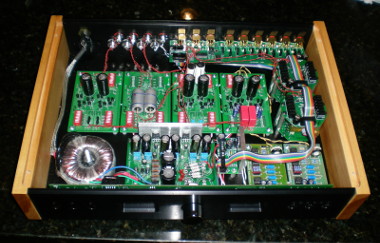While there are obvious technical reasons for the superiority of line level crossovers it was clear that I needed to be very careful about the implementation. Otherwise I would just be moving the substantial negatives I heard from my crossover experiments to another place in the system. With this in mind decided to create a custom solution that would integrate directly with my components. This is an inflexible approach the requires designing for specific components that also would require re-tuning if components are changed. However, this approach allowed me to introduce the crossover with minimal circuitry being added to the signal path. For each driver I implemented a unique crossover that was carefully designed to be as transparent as possible.
In most cases some sort of buffering was required to implement the crossovers and also to keep the input impedance to the crossover high. I used a high quality discrete, no feedback, class A design that is extremely transparent. A servo circuit in the buffer eliminates the possibility of DC offset. This allowed me to dispense with input capacitors in the amplifiers. With this arrangement the only capacitors in the signal path are at the input of each crossover section. The net is that adding the crossover did not introduce any additional capacitors to the signal path. To provide adjust-ability I used 8 position DIP switch blocks combined with precision surface mount resistors to form an adjustable resistance that tracks nearly perfectly with both channels. A description of the approach taken for each driver follows:






